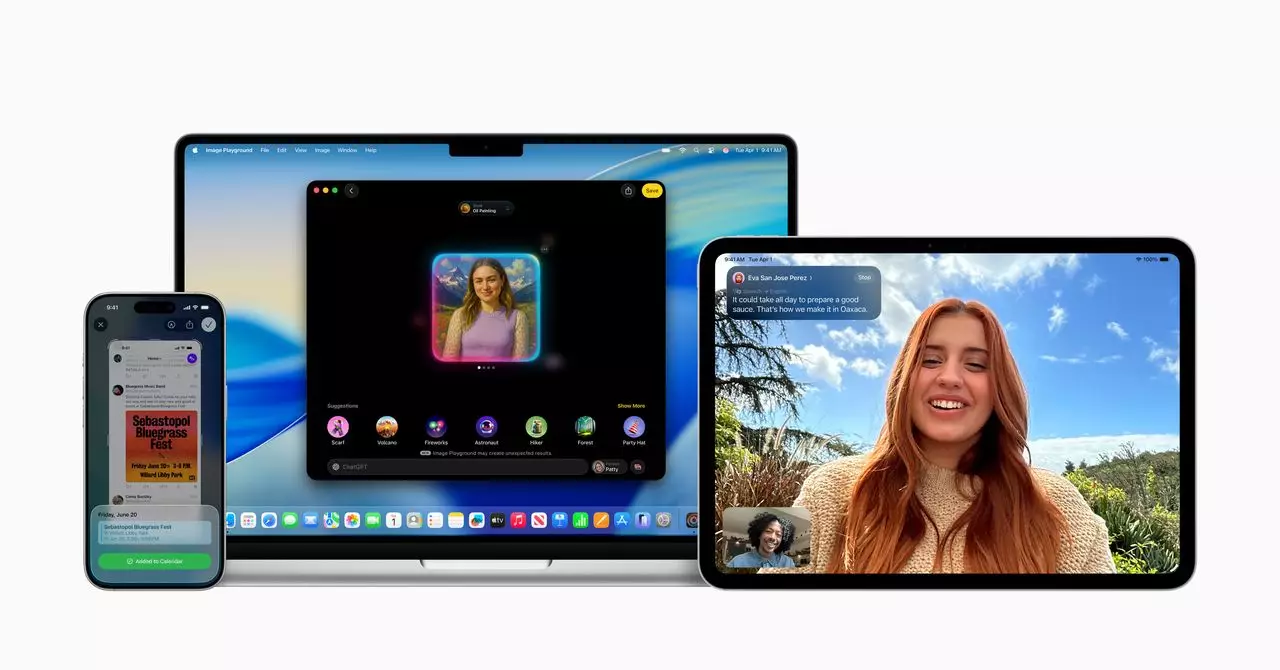Amidst the chaos of the tech revolution, Apple is pursuing an evolutionary, rather than revolutionary, strategy in the realm of artificial intelligence. During its most recent Worldwide Developers Conference (WWDC), the company unveiled a series of enhancements to their existing lineup of devices including the iPhone, Mac, and Apple Watch. This approach is reminiscent of how Apple traditionally operates—methodically and with great care—even as other major players in the industry like Google, OpenAI, and Meta accelerate into more complex AI solutions. While some may perceive this as a hesitance to dive into the AI pool, there are nuanced reasons behind Apple’s stance.
New Features to Amplify User Experience
Among the showcase of innovations at WWDC was the introduction of Live Translation, a feature that enables real-time translation during phone and FaceTime calls. This includes substantial accessibility improvements for users communicating across language barriers, enhancing the user experience significantly. Additionally, Apple presented ‘Workout Buddy,’ an AI-driven voice assistant that motivates users during workouts. During a live demonstration, the AI encouraged a user by recognizing their recent activity patterns—“This is your second run this week. You’re crushing it!” Such functionalities may appear modest, yet they possess potential far beyond mere novelty. They are structured to integrate seamlessly into daily activities, blending technology into the fabric of users’ lives.
Advancements in Visual Intelligence and Beyond
Apple’s upgrades to Visual Intelligence represent yet another meaningful stride towards optimizing users’ interaction with their devices. The latest iteration can intelligently analyze not just live camera feeds but also captured screenshots, whether for identifying products or summarizing information from websites. This aligns well with the demand for enhanced visual engagement in our increasingly visual-centric world, as users seek intuitive computer interfaces that mimic human interaction. Moreover, the advancements to tools like Genmoji and Image Playground that deploy AI to generate creative images showcase Apple’s devotion to amalgamating artistry and technology.
On one hand, these applications certainly demonstrate AI’s vast potential; however, some critics point out that Apple’s advancements feel iterative compared to the groundbreaking capabilities of its competitors.
Apple’s Competitive Landscape
Despite its ambitious lineup, Apple faces critical scrutiny regarding the pace of its AI development relative to its competitors. While Apple’s new features take a step in the right direction, they further amplify the notion that the firm is still catching up in an arena that is already bustling with innovation. Analysts, such as Paolo Pescatore from PP Foresight, argue that this slow approach might be prudent, considering user preferences and the overarching goal of maintaining customer loyalty. He emphasizes the delicate balance Apple must find—delivering cutting-edge features without alienating its loyal user base accustomed to the company’s traditional methodologies.
Adding another layer to the discussion, Francisco Jeronimo from IDC highlighted the significance of Apple opening up its AI models for developers. Accessibility of these tools positions Apple closer to industry giants like Google and OpenAI. Additionally, Apple champions the idea of running AI models locally on devices, ensuring functionality without reliance on a network, which inherently caters to user privacy—an aspect increasingly valued in today’s digital age.
The Road Ahead: Challenges and Opportunities
Looking toward the future, questions loom about whether Apple can leap beyond its incremental advancements to become a leader in AI, especially as competitors leverage AI for innovative paradigms of personal computing. While Apple’s cautious approach is rooted in a sound understanding of its consumer base, the brand must also respond proactively to the rapidly changing landscape of technology.
As companies like OpenAI move forward with bold integrations of AI into daily living—promising tools like versatile AI systems that employ real-time interaction—Apple must ensure that it does not fall behind the pack. The spirit of innovation must blend meticulously with user-centric philosophy for Apple to cement its place as a front-runner in the AI race rather than a mere participant. Nonetheless, Apple’s confident strides at WWDC suggest that it is far from complacent; instead, it remains poised to keep sculpting the future of technology with meaningful, context-driven AI advancements.

